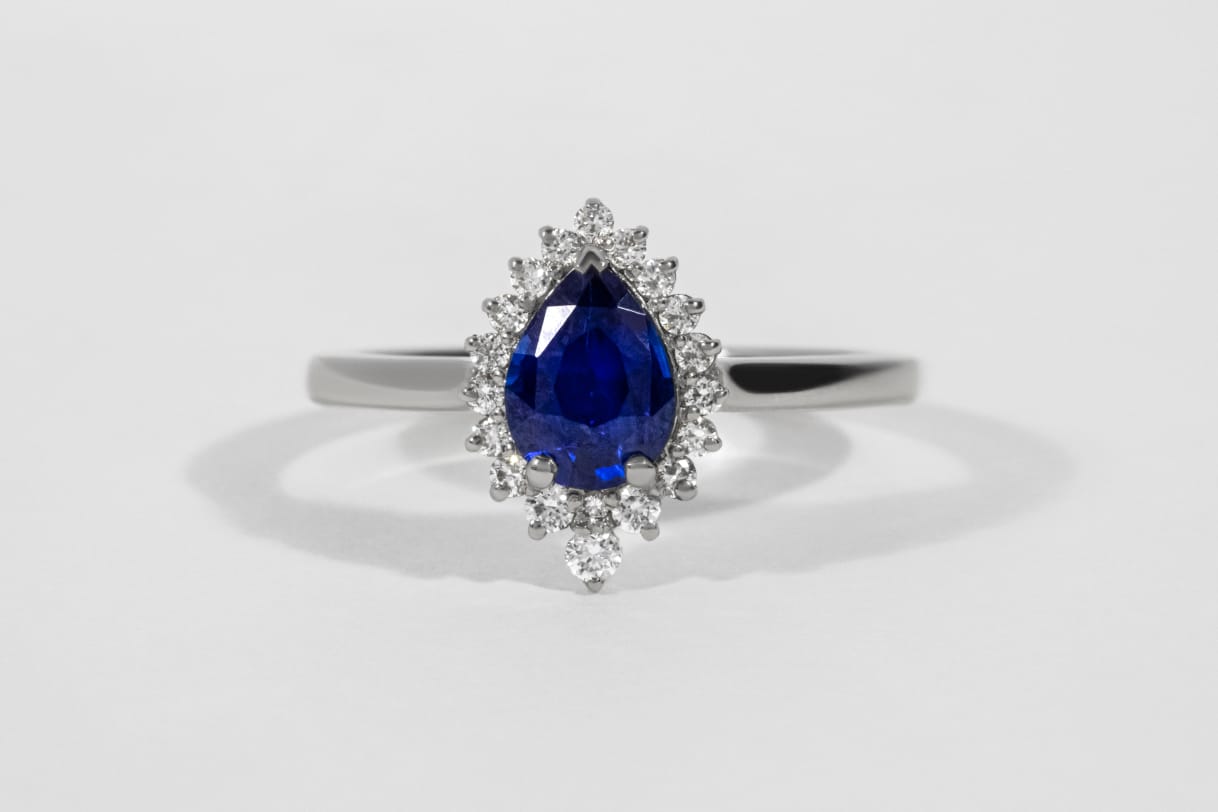Introduction
The blue diamond is an incredibly rare, luxurious and captivating stone. The mesmerizing blue color they exhibit, in combination with their rarity position them symbolically as luxury and elegance symbols. So what makes these rare diamonds so expensive, exactly? This article covers everything you never knew about blue diamond pricing from how they are calculated to market predictions and investment analysis.
Factors Affecting Blue Diamond Cost
A variety of factors determine the blue diamond cost and understanding them all is crucial to know whether you are getting what it costs.
The 4Cs:
Just like any diamond, blue diamonds are also graded on the 4 Cs. Cut: The quality of cut indicates how well the diamond is shaped and a better cutting will reflect all light out so it appears bright. The color grading for blue diamonds is also different as it focuses on the intensity and even spread of hue. Clarity: the fewest inclusions equals the highest value Lastly, the size of a diamond is measured in carats with bigger diamonds more valuable than smaller ones.
Rarity of Blue Diamonds
The price of blue diamonds is greatly influenced by how rare they are. A diamond of this color only has been mined from a few sources around the world, most famously Cullinan Mine in South Africa. Blue diamonds are incredibly rare and command very high prices for this reason.
Historical Value and Significance
Blue diamonds have a very colorful history and throughout time, they were owned by kings as well as by celebrities. These gemstones have been known to command astronomical amounts at auctions, a testament of their higher luxury and rarity among the famous blue diamonds such as Hope Diamond. Other blue diamonds may be expensive because of the historical value affiliated to them, too.
How to Evaluate the Cost Of a Blue Diamond
There are a number of important factors to consider when assessing the blue diamond cost.
Know the Price per Carat
Prices per carat of blue diamonds will depend on the color intensity and quality grade. It usually averages between $50,000 and $1,000 or more per carat. When pricing, a stronger and bluer deeper blue will command more money per carat.
The Role of Certification
When buying a blue diamond, remember about the certification. Popular gem labs such as the GIA provide comprehensive reports that confirm if a diamond is real, its quality and whether it has been treated. You may pay a premium for a certified blue diamond, but you can be sure that what you spent your money on is real.
The Impact of Current Market Trends on Price
The blue diamond market then becomes a function just as much of the larger diamond market broadly and economic impacts. For example, blue diamonds are considered a safe investment and their price may have risen due to economic uncertainty. With that, you can wait until you find the right time to purchase by following market trends.
The Market for Blue Diamonds
Knowing the market for blue diamonds will help you to better traverse your purchase or investment.
Where to Buy Blue Diamonds
Blue diamonds are available from many sources, including upmarket jewelers and auction houses as well online outlets. These are all sources and each has its own positives and negatives. Auction houses, for example, are likely to carry more rare, valuable diamonds (at a premium), and online retailers may come with lower prices but will require extensive research upfront for verification of authenticity.
Retail Prices vs. Auction Prices
Blue diamond auction prices on occasion surpass retail prices, especially those that are historically important and exceptionally fine. Still, auctions can be unpredictable beasts and it is important that you have a budget in mind before the auction commences. On the flip side, retail prices are less volatile compared to auction house asking fees though you won’t find as many opportunities for obtaining a truly one of a kind item.
Conclusion
Summary of Blue Diamond Costs
Blue diamonds are some of the costliest and most desirable gemstones on Earth. A wide range of factors affect their price, the 4Cs, scarcity and demand history as well as market trends. By knowing these factors you need to know about; it helps make research before the purchase or investment.
Final Thoughts on Buying Blue Diamonds
Yellow vs. Blue Where yellow is more common, buying blue diamond requires research for certification of market and potential over time. If you are buying for personal enjoyment or as an investment, there is no better opportunity than that available with blue diamonds.

No Comment! Be the first one.